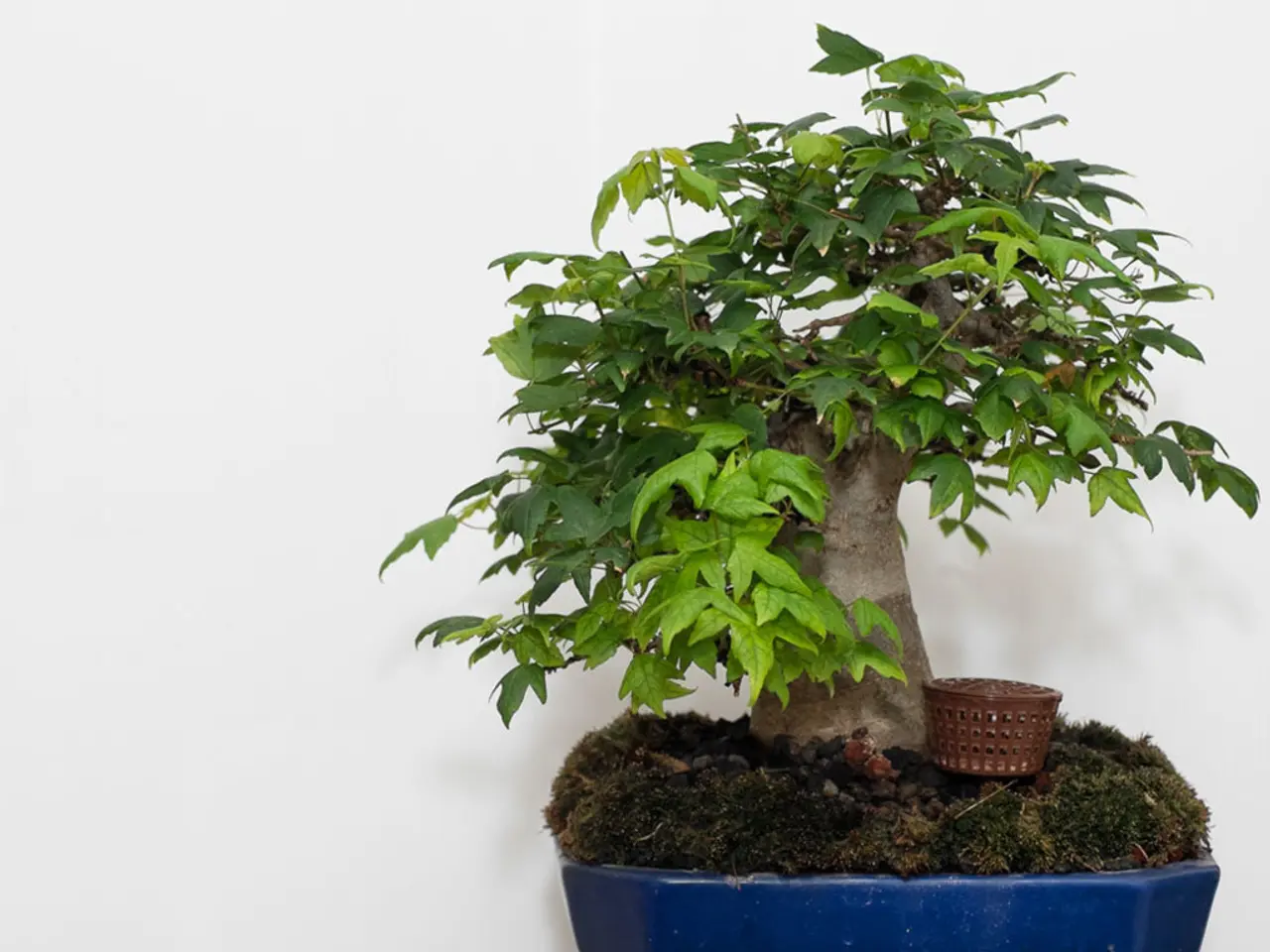Year-round Bonsai Maintenance: A Seasonal Handbook for Optimal Outdoor Growth
In the world of bonsai, caring for your tree outdoors requires an understanding of its needs and the unique challenges posed by various climates. Here's a guide to help you thrive in your bonsai journey.
Spring: Repotting Season
Evergreen species can be repotted in the spring, when new growth begins. This is an opportune moment to check the roots, looking for signs of rot, decay, or nutrient deficiencies. Pruning any dead or damaged branches during dormancy promotes healthy growth come spring.
Summer: Adapting to Arid Climates
In regions with arid climates, your bonsai may need more frequent watering to combat dry air and intense sunlight. Choosing species tolerant of low light, like Chinese Elm or Ficus, can enable you to grow outdoor bonsai in shaded areas with limited sunlight.
Winter: The Dormant Period
During winter, outdoor bonsai enter a state of dormancy. This pivotal period demands careful attention to ensure it remains healthy and strong. Reducing watering during winter is crucial, as the tree's moisture requirements plummet, and excess water can be detrimental.
In regions with high humidity, prioritizing air circulation to prevent fungal diseases may be necessary. Building a snow barrier around the base of the tree using snow or straw can prevent moisture from seeping into the soil. Mulching around the base of the bonsai during winter helps regulate soil temperature and retain moisture.
Coastal and Inland Regions: Unique Challenges
Coastal climates bring salt-laden winds, which can dry out your tree's leaves and roots, while inland regions often experience extreme temperature fluctuations, leading to stress and potential disease. Creating a winter haven by grouping pots together or using a cold frame can protect the bonsai from harsh winds and extreme cold snaps. Draping a breathable material over the bonsai and securing it with twine or stakes can create a snow barrier.
Repotting in Harsh Winter Regions
If you live in a region with harsh winters, it's best to repot in the autumn, allowing the bonsai to establish itself before the cold weather sets in. Outdoor bonsai can be grown in containers with built-in water reservoirs, but be cautious not to overwater, as this can lead to root rot and other issues.
Finding the Right Species
Some species, like Ficus and Juniper, are more resilient to harsh weather conditions. Bonsai types like Ficus (e.g., Ficus benjamina) are well suited for outdoor cultivation in areas with high humidity, as they thrive with consistent moisture and prefer warm, humid conditions. Miniature ferns such as Asplenium trichomanes var. miniata are also ideal for humid environments due to their preference for moist, shaded locations and high air humidity.
Cultivating a Sense of Reverence
As you care for your tree, cultivate a sense of reverence for the natural world and its rhythms. Regularly checking your outdoor bonsai tree for signs of stress, pests, or disease is crucial. Monitoring and adjusting the cover regularly is necessary to prevent moisture buildup and maintain airflow.
Fertilizing Outdoor Bonsai
Outdoor bonsai require more frequent fertilization than indoor ones, as they're constantly adapting to Mother Nature's whims, demanding a steady supply of energy to thrive in their dynamic environment. Adding organic matter like compost or well-rotted manure to the soil can replenish nutrients and improve soil structure.
Gently Aerating the Soil
Gently aerating the soil around the bonsai's roots using a fork or chopstick can prevent crucial oxygen and water from reaching the roots. Soil compaction and nutrient depletion can hinder the growth and overall health of outdoor bonsai, and regular maintenance is necessary to prevent these issues.
Protecting Your Bonsai
In regions with extreme temperature fluctuations, your tree may benefit from additional protection during harsh weather conditions. Building a snow barrier around the base of the tree using snow or straw can prevent moisture from seeping into the soil. Inspect the bark for signs of cracks, cankers, or insect infestations.
Read also:
- Peptide YY (PYY): Exploring its Role in Appetite Suppression, Intestinal Health, and Cognitive Links
- Toddler Health: Rotavirus Signs, Origins, and Potential Complications
- Digestive issues and heart discomfort: Root causes and associated health conditions
- House Infernos: Deadly Hazards Surpassing the Flames








